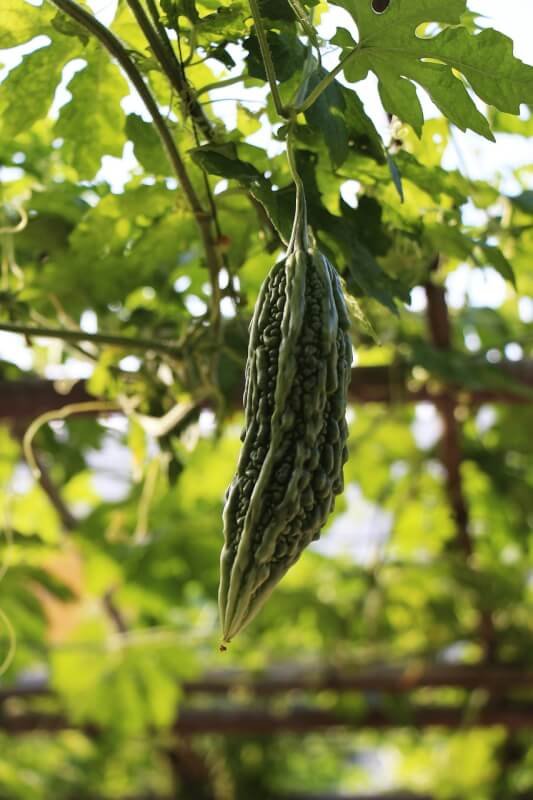In the wonderful world of urban gardening, one of the key challenges faced by garden enthusiasts like yourself is how to effectively irrigate your little green paradise in a sustainable manner. This article aims to shed light on the art of creating a sustainable irrigation system for your urban garden, providing you with practical tips and techniques that will help nurture your plants while conserving water. So, put on your gardening gloves and let’s dive into the world of sustainable irrigation!

Choosing the Right Irrigation Method
Understanding the Different Irrigation Methods
When it comes to choosing the right irrigation method for your urban garden, it’s important to understand the different options available. The most common irrigation methods include overhead sprinklers, drip irrigation, and soaker hoses. Overhead sprinklers distribute water in a spray pattern, covering a large area, while drip irrigation delivers water directly to the plant roots, minimizing water loss. Soaker hoses, on the other hand, slowly release water along their length, allowing for deep root penetration. Each method has its advantages and disadvantages, so it’s crucial to consider your garden’s specific needs before making a decision.
Factors to Consider in Selecting an Irrigation Method
When selecting an irrigation method, there are several key factors to consider. First and foremost, you need to assess the water requirements of your plants. Some plants, such as succulents, have lower water needs, while others, like vegetables, require more consistent moisture. Additionally, you should consider the layout and size of your garden. If you have a smaller space, drip irrigation might be more suitable, as it allows for targeted watering. Finally, it’s important to think about water efficiency and sustainability. Choosing an irrigation method that minimizes water waste and promotes conservation is not only environmentally responsible, but it can also help save on water bills in the long run.
Sustainable Irrigation Methods for Urban Gardens
In recent years, there has been a growing emphasis on sustainable irrigation methods for urban gardens. These methods aim to reduce water usage and waste while promoting healthy plant growth. Some sustainable irrigation techniques include rainwater harvesting, greywater recycling, and the use of smart irrigation controllers. Rainwater harvesting involves collecting and storing rainfall for later use in the garden. Greywater recycling, on the other hand, involves reusing water from sources like sinks and showers to irrigate plants. Smart irrigation controllers utilize technology to automatically adjust watering schedules based on weather conditions and plant needs. By incorporating these sustainable methods into your urban garden, you can contribute to water conservation efforts and create a more environmentally friendly space.
Designing the Irrigation System
Assessing Water Needs
Before designing your irrigation system, it’s essential to assess the water needs of your plants. Different plants have varying water requirements, so it’s important to consider factors such as plant type, stage of growth, and climate conditions. By understanding the specific water needs of your garden, you can design an irrigation system that delivers the right amount of water to keep your plants healthy and thriving.
Calculating Water Supply
Once you have assessed your plants’ water needs, it’s time to calculate your water supply. This involves understanding how much water is available for irrigation and how much your plants require. Start by determining your water source, whether it’s tap water, rainwater, or a combination of both. Then, measure the flow rate or volume of water available. Finally, calculate the water demand by considering factors such as plant type, evapotranspiration rates, and soil type. By accurately calculating your water supply, you can ensure that your irrigation system is optimized to meet your garden’s needs.
Mapping Out the Garden
To design an effective irrigation system, it’s important to map out your garden. Take time to identify where your plants are located and group them based on their water needs. This information will help you determine how to best distribute water throughout your garden. Consider factors such as the size and shape of your garden, the presence of any obstacles or structures, and the elevation changes within the space. By creating a detailed map of your garden, you can plan the layout of your irrigation system and ensure that water is evenly distributed to all areas.
Plumbing and Piping Setup
Once you have mapped out your garden and determined the water needs, it’s time to set up the plumbing and piping for your irrigation system. This involves installing pipes, valves, and fittings to distribute water efficiently. It’s important to use high-quality materials that are suitable for outdoor use and capable of withstanding the water pressure required for irrigation. Consider factors such as the distance between water source and plants, the elevation changes, and any potential obstacles. By carefully planning and installing the plumbing and piping, you can ensure that water flows smoothly and effectively throughout your garden.

Water Conservation Techniques
Mulching
One effective water conservation technique is mulching. Mulch is a layer of organic or inorganic material that is placed on the soil surface around plants. It helps to reduce evaporation, suppress weed growth, and regulate soil temperature. By applying mulch to your garden beds, you can minimize water loss due to evaporation and reduce the need for frequent watering.
Rainwater Harvesting
Rainwater harvesting is another excellent technique for conserving water in your urban garden. It involves collecting rainwater from rooftops or other surfaces and storing it for later use. This stored rainwater can then be used for irrigation purposes, reducing the reliance on tap water. By implementing rainwater harvesting, you can take advantage of nature’s free resource and reduce your water consumption.
Greywater Recycling
Greywater recycling is the process of reusing wastewater from sources like sinks, showers, and washing machines to irrigate plants. After being treated or filtered, greywater can safely be used for non-potable purposes, such as watering plants. By recycling greywater, you can save freshwater and reduce the strain on municipal water supplies. However, it’s important to follow safety guidelines and local regulations when implementing greywater recycling in your garden.
Drip Irrigation
Drip irrigation is a highly efficient watering technique that delivers water directly to the plant roots. This method minimizes water loss due to evaporation and runoff, as well as reduces weed growth. Drip irrigation systems consist of tubes or hoses with small emitters that provide a slow, steady drip of water to the plants. By using drip irrigation in your urban garden, you can ensure that water is delivered precisely where it’s needed, promoting healthy plant growth while minimizing water waste.
Using Smart Irrigation Controllers
Smart irrigation controllers are an innovative technology that can significantly improve water efficiency in your garden. These controllers use sensors and weather data to automatically adjust irrigation schedules based on factors such as rainfall, temperature, and soil moisture levels. By optimizing watering based on real-time conditions, smart irrigation controllers can prevent overwatering and reduce water waste. Additionally, many smart controllers can be connected to mobile apps, allowing you to monitor and control your irrigation system remotely. By investing in smart irrigation controllers, you can save water, time, and effort in maintaining your urban garden.
Efficient Watering Practices
Timing the Watering
Timing is crucial when it comes to efficient watering practices. It’s best to water your garden early in the morning or late in the evening when temperatures are cooler and evaporation rates are lower. By avoiding watering during the hottest parts of the day, you can minimize water loss and ensure that the plants can make the most of the water provided. Additionally, watering during the appropriate times can help prevent fungal diseases that thrive in wet conditions.
Proper Watering Techniques
In addition to timing, proper watering techniques are essential for water efficiency. Water your plants at the base, near the root zone, to ensure that water reaches the plant’s roots. Avoid spraying the foliage excessively, as this can lead to disease and unnecessary water loss. It’s also important to water deeply and infrequently, allowing the water to penetrate the soil and reach the plant’s deep roots. By giving your plants a thorough watering and allowing the soil to dry out between watering sessions, you promote healthy root development and reduce water waste.
Monitoring Soil Moisture
Regularly monitoring soil moisture is a key practice in efficient watering. Use a soil moisture meter or simply check the soil’s moisture level by inserting your finger into the ground. If the soil feels dry, it’s time to water. However, if the soil feels damp, it’s best to wait and avoid overwatering. By paying attention to the soil moisture, you can ensure that you provide water only when necessary, preventing water waste and potential plant damage.
Avoiding Overwatering and Runoff
Overwatering not only wastes water but can also lead to root rot and other plant diseases. It’s important to water your plants only when they actually need it. One way to avoid overwatering is to use a rain gauge to measure how much natural rainfall your garden receives. If there has been ample rainfall, you may not need to water your plants at all. Additionally, be mindful of runoff. If you notice water pooling or running off your garden beds, it’s a sign that you are applying water too quickly or in excessive amounts. Adjust your watering schedule or use techniques such as mulching to prevent runoff and ensure that water reaches the plant’s roots effectively.

Managing Soil Health
Improving Soil Structure
Healthy soil is the foundation for a successful garden, and improving soil structure is an important part of maintaining soil health. Incorporate organic matter, such as compost or well-rotted manure, into your soil to improve its structure. This will help with water retention and drainage, promoting healthy root development. Additionally, avoid compacting the soil by minimizing foot traffic and using raised beds or pathways. By improving soil structure, you create an ideal environment for your plants and ensure efficient water absorption.
Optimizing Soil Drainage
Optimizing soil drainage is crucial for preventing waterlogging and root rot. To improve drainage, consider using raised beds or adding organic matter to loosen compacted soil. You can also install drainage systems or create slopes to encourage water to flow away from the planting areas. Proper drainage allows excess water to escape, preventing waterlogged soil and promoting healthy root growth.
Amending Soil with Organic Matter
Amending your soil with organic matter is essential for maintaining fertility and improving water-holding capacity. Compost, well-rotted manure, and other organic amendments help to provide essential nutrients to the plants and enhance soil structure. Organic matter also acts as a sponge, holding onto water and releasing it slowly to the plants’ roots. By regularly adding organic matter to your soil, you can create a nutrient-rich environment that retains moisture effectively.
Composting
Composting is a sustainable practice that not only helps reduce waste but also enhances soil health. By composting kitchen scraps, yard trimmings, and other organic materials, you can create nutrient-rich compost that adds essential elements to the soil. Compost improves the soil’s ability to retain water, reduces erosion, and provides a beneficial environment for soil microorganisms. By incorporating compost into your garden, you can promote healthy plant growth and reduce the need for excessive watering.
Avoiding Soil Erosion
Soil erosion can lead to the loss of valuable topsoil and adversely impact plant growth. To prevent soil erosion, consider using techniques such as planting densely, creating windbreaks, and using mulch to protect the soil surface. Additionally, avoid excessive tilling, as this can disrupt the soil structure and increase erosion risk. By implementing erosion control measures, you can protect your soil from water runoff and wind, ensuring that it remains fertile and healthy.
Choosing Sustainable Irrigation Components
Water-Efficient Sprinklers
When choosing sprinklers for your irrigation system, opt for water-efficient models. Look for sprinklers that have a low precipitation rate, which means they deliver water at a slow, steady rate, mimicking natural rainfall. This helps to minimize runoff and ensures that water is effectively absorbed by the soil. Consider using rotary sprinklers or gear-driven sprinklers, as they are known for their water efficiency.
Low-Flow Drip Emitters
For targeted watering, utilize low-flow drip emitters. These emitters deliver water directly to the plant roots, minimizing water loss due to evaporation and runoff. They are particularly useful for individual plants or small spaces where precise watering is necessary. Low-flow drip emitters are available in various flow rates, allowing you to customize the watering intensity based on the plant’s needs.
Pressure Regulators and Valves
To maintain optimal water pressure and prevent water waste, it’s important to use pressure regulators and valves in your irrigation system. Pressure regulators help ensure that the water pressure remains consistent throughout the system, preventing excessive water flow and potential damage to plants and pipes. Valves allow for precise control over water distribution, enabling you to isolate specific areas or adjust watering frequency as needed.
Rain Sensors
Rain sensors are valuable additions to any irrigation system, as they automatically shut off irrigation when rainfall is detected. By installing rain sensors, you can prevent unnecessary watering during rainy periods, conserving water and avoiding overwatering. Rain sensors are typically mounted in an open area, away from overhangs or obstructions, to accurately measure rainfall. They are designed to interrupt the irrigation system when a specific amount of rain is received, ensuring water efficiency.
Soil Moisture Sensors
Soil moisture sensors are useful tools for managing irrigation effectively. These sensors measure the moisture content of the soil and provide real-time data on when irrigation is needed. By monitoring soil moisture levels, you can avoid under- or overwatering and only apply water when necessary. Some soil moisture sensors can be connected to smart irrigation controllers, allowing for automated adjustments based on the soil’s moisture content. With the help of soil moisture sensors, you can optimize water usage and ensure that your plants receive the right amount of moisture for healthy growth.
Maintaining the Irrigation System
Regular Inspections
Regular inspections are essential for maintaining an efficient irrigation system. Periodically check all components of your system, including pipes, valves, sprinklers, and emitters, for any signs of damage or leaks. Ensure that all connections are tight and secure. Additionally, inspect your garden for any signs of water waste, such as runoff or overspray. By conducting regular inspections, you can identify and address issues promptly, preventing water loss and promoting the longevity of your irrigation system.
Cleaning and Flushing
Cleaning and flushing your irrigation system is necessary to remove any debris, sediment, or mineral deposits that may clog the pipes or emitters. Flushing the system involves running water through the pipes and emitters to clear any buildup. It’s advisable to flush the system at least once a year or more frequently if you notice reduced water flow or uneven watering. By keeping your irrigation system clean and free from obstructions, you ensure optimal water distribution and prevent potential damage.
Replacing Faulty Components
Over time, components of your irrigation system may wear out or become damaged. It’s important to replace any faulty components promptly to ensure the system’s effectiveness. Check for signs of leaks, cracks, or inefficient water distribution during your regular inspections. If you notice any issues, replace the damaged components with high-quality replacements. By addressing faulty components, you can prevent water waste and maintain the efficiency of your irrigation system.
System Winterization
If you live in an area with freezing temperatures, it’s crucial to properly winterize your irrigation system to prevent damage. Before the first frost, turn off the water supply to the system and drain any water from the pipes. This prevents the water from freezing and causing cracks or bursts in the pipes. Additionally, it’s advisable to insulate exposed pipes and wrap them with insulation tape or foam. By winterizing your irrigation system, you can protect it from costly and potentially irreversible damage caused by freezing temperatures.
Scheduling Professional Maintenance
While regular inspections and maintenance performed by the homeowner are essential, scheduling professional maintenance is also highly recommended. Irrigation professionals have the expertise and specialized tools to identify and fix issues that may not be apparent to the untrained eye. They can perform comprehensive system checks, adjust watering schedules, and ensure optimal water efficiency. By investing in professional maintenance, you can have peace of mind knowing that your irrigation system is well-maintained and functioning at its best.
Educating Yourself on Local Regulations
Understanding Water Regulations
Before implementing any irrigation system in your urban garden, it’s crucial to educate yourself on local water regulations. Different regions may have specific water usage restrictions or guidelines that you need to comply with. Familiarize yourself with any watering schedules, permitted irrigation methods, or limitations on water usage. By understanding the local water regulations, you can ensure that your garden remains compliant and avoid any potential fines or penalties.
Obtaining Permits
In some areas, obtaining permits may be required before installing an irrigation system. Contact your local municipality or water authority to inquire about any necessary permits or approvals. This is particularly important if you plan to install a larger-scale or more complex irrigation system. Complying with permit requirements ensures that your irrigation system meets local standards and adheres to any environmental or safety regulations.
Complying with Water Restrictions
Water restrictions may be implemented during times of drought or water scarcity. It’s important to comply with these restrictions to contribute to water conservation efforts. Familiarize yourself with the specific restrictions in your area and adjust your watering practices accordingly. This may involve reducing watering frequency, adhering to specific watering days or times, or implementing water-saving techniques. By complying with water restrictions, you can do your part in conserving water resources and being a responsible member of the community.
Monitoring Water Usage and Savings
Tracking Water Consumption
Monitoring your water consumption is an effective way to gauge the efficiency of your irrigation system and identify areas for improvement. Keep a record of the amount of water used for irrigation on a regular basis. This can be done by using a water meter or by checking your water bills. By tracking your water consumption, you can identify any significant increase or decrease in usage, allowing you to adjust your watering practices accordingly.
Estimating Water Savings
Implementing water-saving techniques and using efficient irrigation methods can lead to significant water savings. Estimate the amount of water saved by comparing your current water consumption to your previous usage or by calculating the difference between water usage before and after implementing water conservation measures. This estimation can give you a sense of the impact your sustainable irrigation practices are making and motivate you to continue adopting water-saving strategies.
Analyzing Water Efficiency
Analyzing water efficiency involves evaluating the effectiveness of your irrigation system and determining ways to improve its efficiency. Consider factors such as water distribution uniformity, water loss due to evaporation or runoff, and the overall health and growth of your plants. Conduct regular assessments of your irrigation system’s performance and make adjustments as needed. By continually analyzing water efficiency, you can ensure that your irrigation system is operating at its highest potential and making the most efficient use of water resources.
Educating the Community on Sustainable Irrigation
Organizing Workshops and Events
One way to educate the community on sustainable irrigation is to organize workshops and events. These can be hands-on sessions where participants learn about efficient irrigation techniques, water-saving practices, and the benefits of sustainable gardening. Invite local experts to share their knowledge and provide practical demonstrations. Workshops and events provide an interactive and engaging platform for community members to learn and exchange ideas on sustainable irrigation.
Sharing Tips and Best Practices
Sharing tips and best practices with the community is an effective way to disseminate information about sustainable irrigation. Utilize various communication channels, such as social media, newsletters, or community websites, to share practical tips and advice on water conservation in the garden. Highlight the benefits of sustainable irrigation methods and provide step-by-step guides on how community members can implement these practices in their own gardens. By sharing tips and best practices, you can inspire others to adopt sustainable irrigation techniques and contribute to water conservation efforts.
Collaborating with Local Organizations
Collaborating with local organizations, such as environmental groups, gardening clubs, or schools, can amplify your efforts in educating the community. Partner with these organizations to host joint events, workshops, or awareness campaigns on sustainable irrigation. Pooling resources and expertise allows you to reach a wider audience and create a more significant impact. By collaborating with local organizations, you can foster a sense of community and empower individuals to make a difference through sustainable irrigation practices.
Creating a sustainable irrigation system for your urban garden requires careful planning, consideration of various factors, and the implementation of water-saving techniques. By choosing the right irrigation method, designing an efficient system, utilizing water conservation techniques, practicing efficient watering, managing soil health, selecting sustainable components, and maintaining the system, you can create an environmentally friendly garden that conserves water and promotes healthy plant growth. By educating yourself on local regulations, monitoring water usage, and sharing knowledge with the community, you can contribute to water conservation efforts and inspire others to adopt sustainable irrigation practices. Remember, with proper planning and conscious choices, you can create a thriving urban garden while minimizing your impact on water resources.


